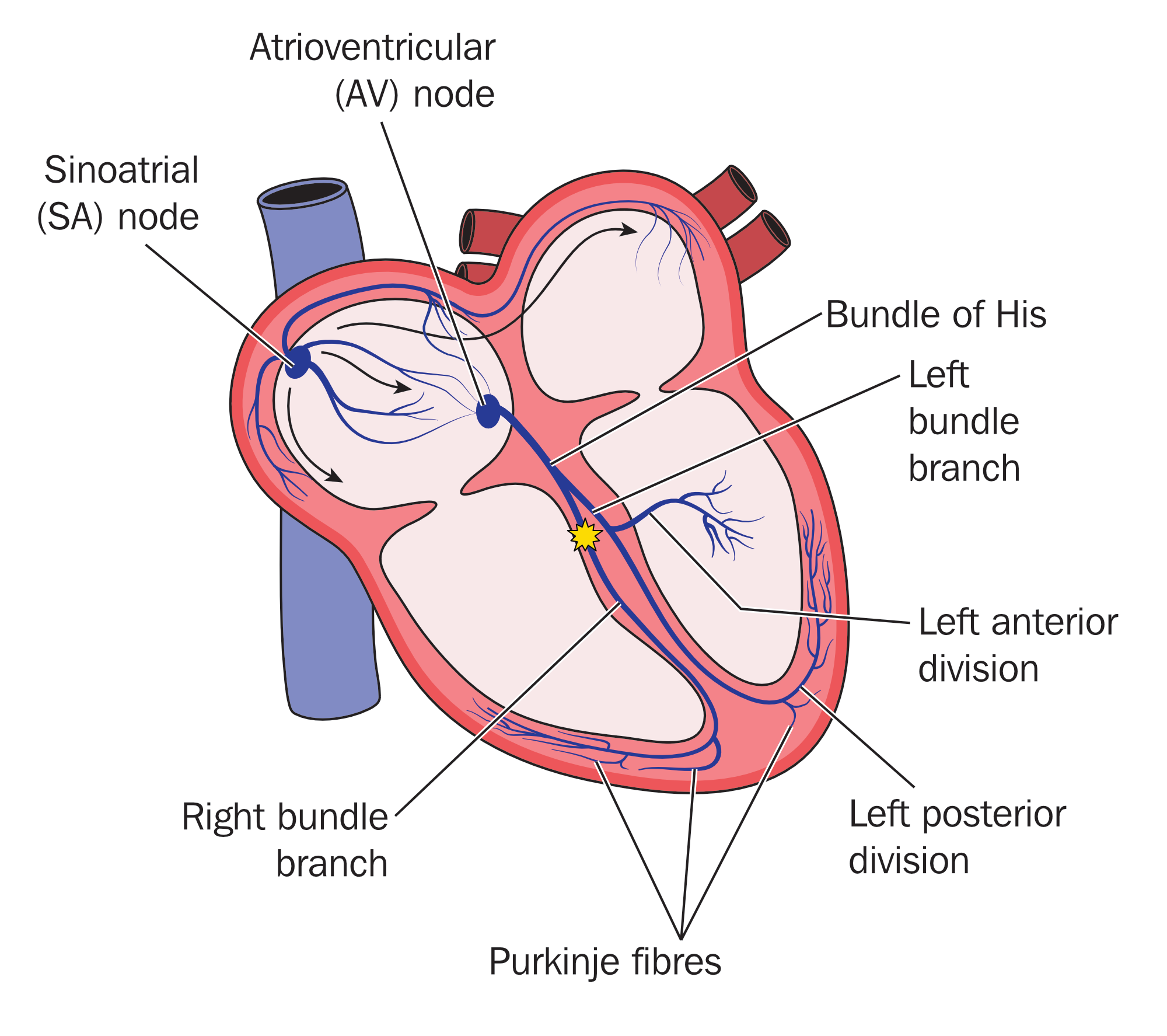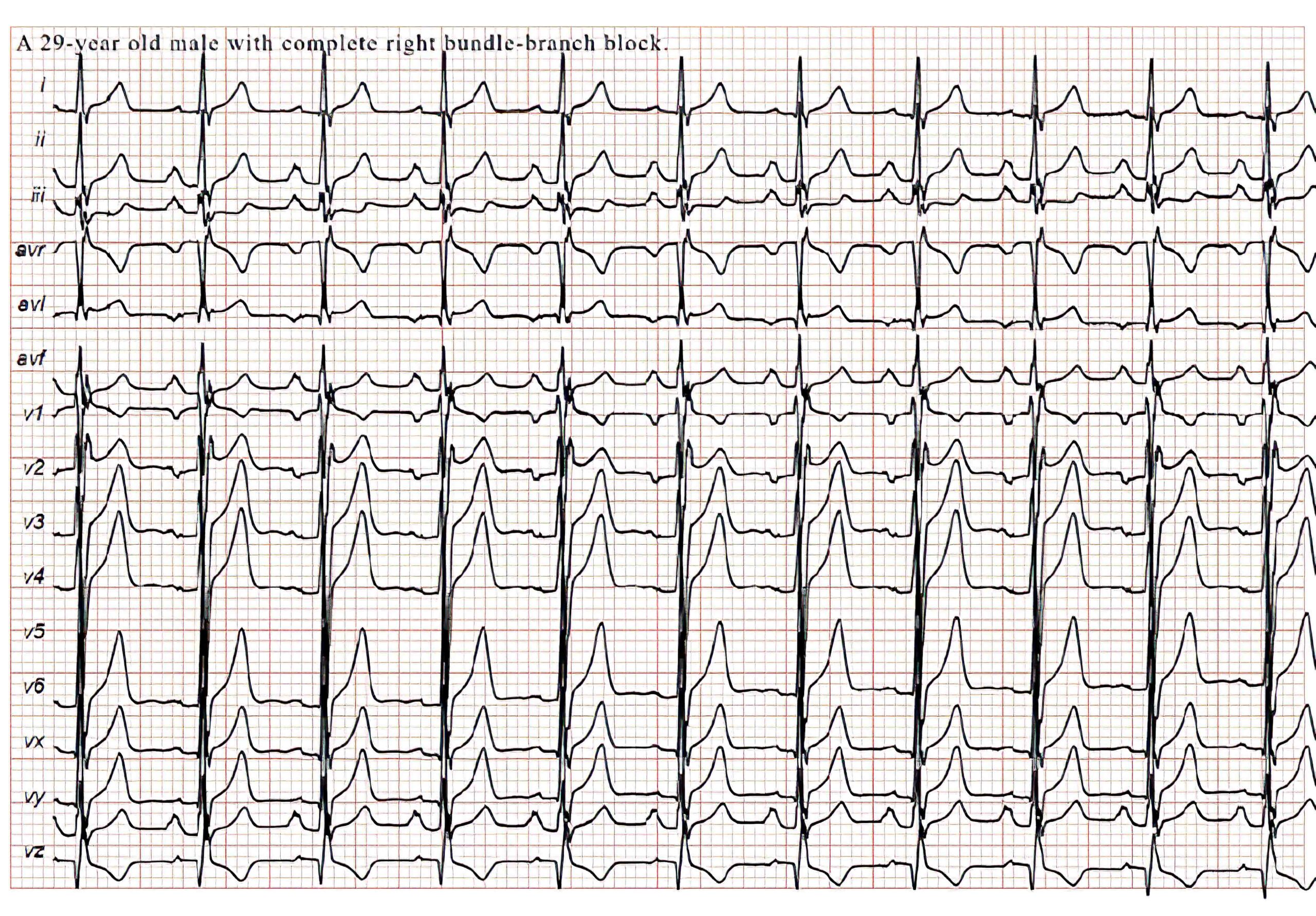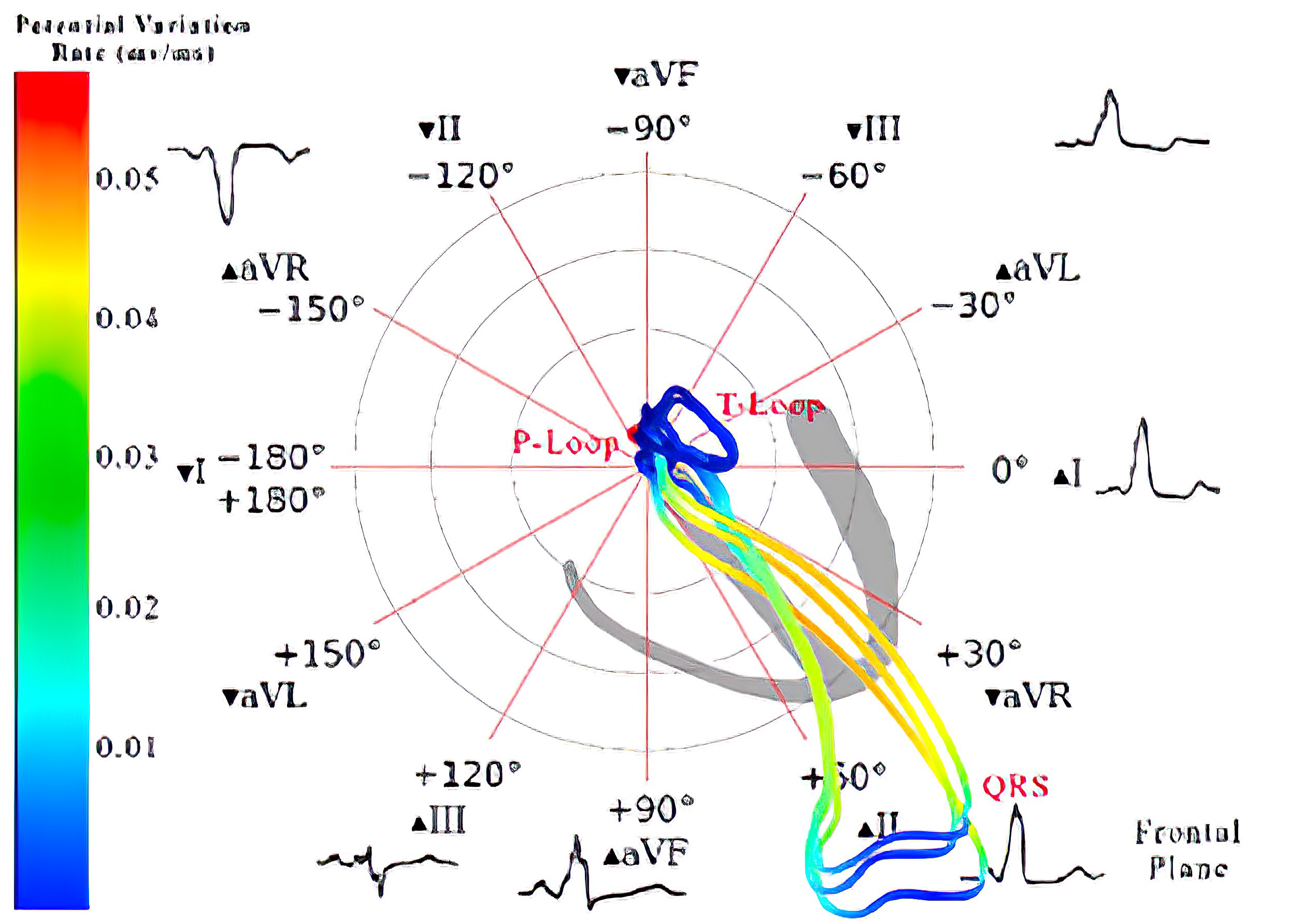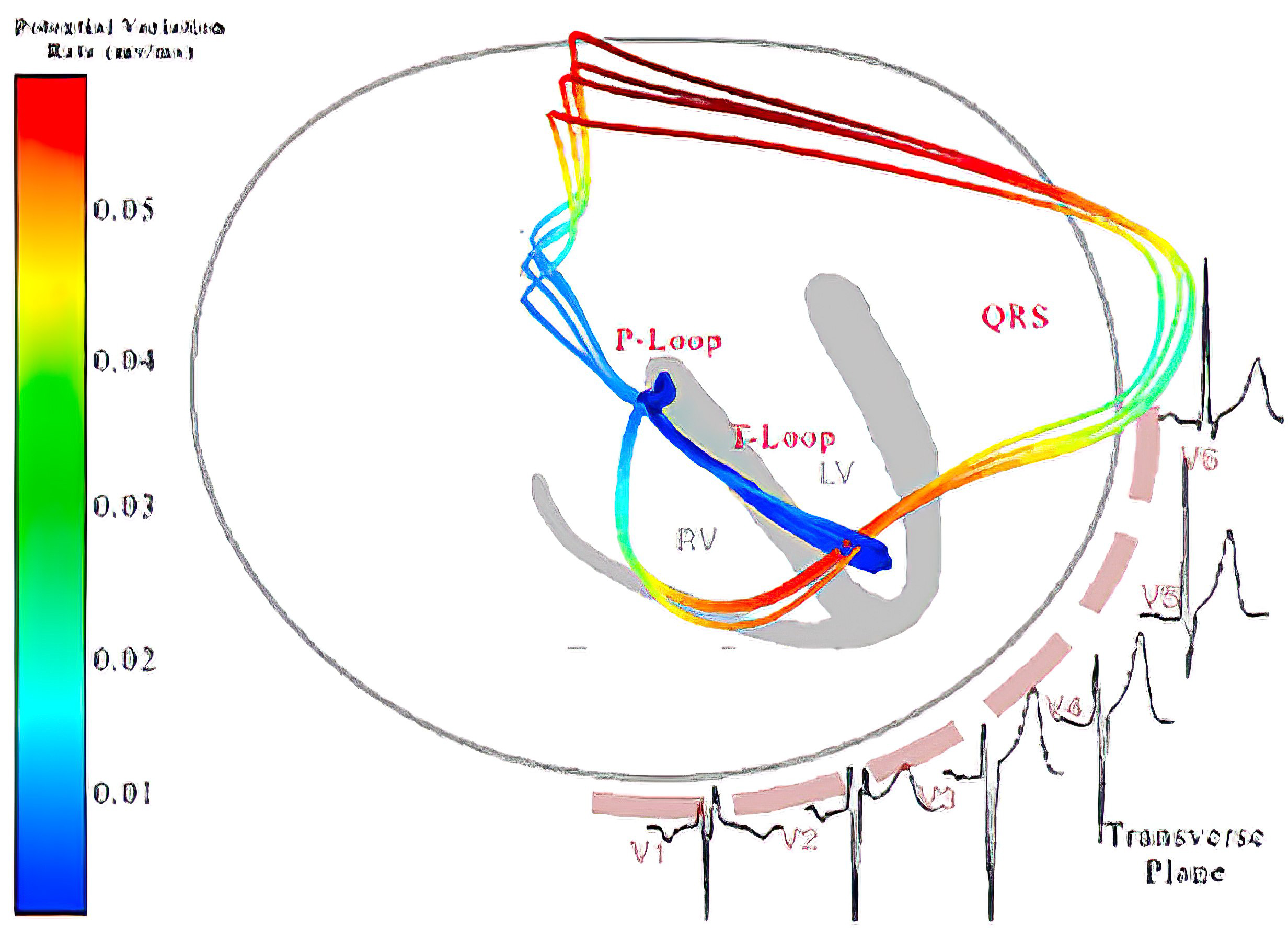Complete Right Bundle-Branch Block
The bundle-branch blocks have a broad QRS complex with a unique QRS configuration. The duration of the QRS in right bundle-branch blocks is 0.12–0.14 seconds. The QRS in left bundle-branch block is usually a bit longer (0.14–0.16 seconds). This difference is caused by abnormal excitation of the septum and free wall of the left ventricle.
In the normal conduction system, the right and left ventricles depolarize together. Since the vectors of the left ventricle are greater in magnitude than those in the right ventricle, ECG tracings reflect only left ventricular depolarizations. Since there is a delay in the conduction of impulses to the right ventricle and during RBBB, the left ventricular depolarizations no longer mask the right ventricular depolarizations on the ECG, and right ventricular depolarization becomes visible. The QRS vector in RBBB looks like normal ventricular activation.

Right Bundle Branch Block
ECG Characteristics of Right Bundle Branch Block
In RBBB, the right ventricle is activated by impulses from the left ventricle that transmit across the septum. V1 and aVR are the two leads capable of detecting rightward vectors. A positive terminal R wave in leads aVR and III confirms a diagnosis of right bundle-branch block. When this positive terminal R wave is absent in lead aVR, then RBBB can be excluded.
In lead V1, the classical pattern is an rsR’ complex where the R’ shows a significant amplitude (about 5–16 mm). The terminal broad R wave has a positive deflection. Sometimes lead III also detects this signal. A broad but notched R complex may be present at times secondary to certain types of projections.
An RSR’ pattern in leads V1 through V3 in conjunction with a frontal QRS axis of +90° or more is indicative of RVH. Other clinical conditions that can cause a single R wave in lead V1 are a posterior MI and preexcitation.
A qR type is seen in RBBB associated with anteroseptal infarction. Leads I, aVL, and V5/V6 mirror image the leads for the delayed right ventricular depolarization. This is represented by broad terminal S waves with an amplitude of 1–6 mm.
Case 1
29-year-old man with complete RBBB.

29-Year-Old Man With Complete RBBB ECG

Vectorcardiograph (Frontal Plane) and Electrocardiograph Between Complete RBBB (Left) and Normal (Right)

Vectorcardiograph (Frontal Plane) and Electrocardiograph Between Complete RBBB (Left) and Normal (Right)
Figure 2 juxtaposes the frontal section of the vectorcardiograph/electrocardiograph of a patient with RBBB (left) and that of a healthy individual (right). The QRS vectors of the patient with RBBB are directed superiorly and toward the right due to the impulse delay. The vectorcardiograph of the healthy individual is directed inferiorly and toward the left. An rsr-pattern is seen in leads aVL and III in the patient with RBBB.

Vectorcardiograph (Transverse Plane) and Electrocardiograph Between Complete RBBB (Left) and Normal (Right)

Vectorcardiograph (Transverse Plane) and Electrocardiograph Between Complete RBBB (Left) and Normal (Right)
Figure 3 visualizes the anterior and posterior vectors in the transverse plane of the same individuals. The vector of the patient with complete RBBB travels more anteriorly and to the right due to the delay in impulse conduction. The vector of the healthy individual travels more posteriorly and to the left. An rSr-pattern is visible in V1 along with an inverted T wave on the ECG of the patient with RBBB.